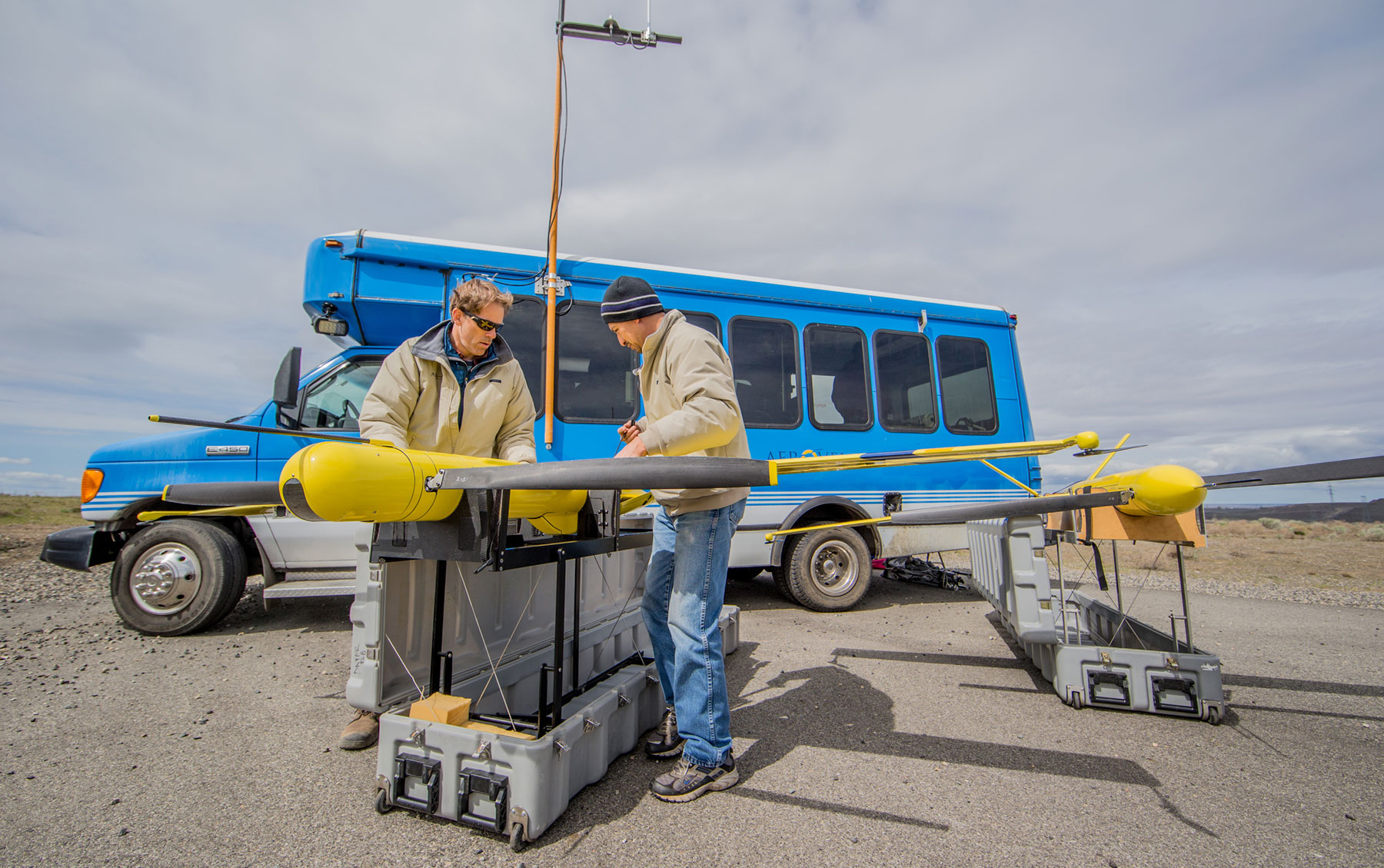Flexrotor Long-Endurance VTOL Aircraft Transitions to Wing-Borne Flight

August 14, 2011
Husum, Washington USA
On Friday Aerovel’s Flexrotor demonstrated transition between hover and wing-borne cruise, capabilities which allow it to combine VTOL with range of more than 3000 km and endurance exceeding a day and a half. Aerovel’s president, Tad McGeer, explains that “transition requires a climb, pitch-over, dive, and zoom, so we entered the new regime with a roller-coaster thrill. But after a few seconds the ride turns sedate, with the engine ticking over for long-endurance cruise at 50-60 kt, and the big rotor hardly making a sound.”
Flexrotor’s first wing-borne flight included autopilot and performance checks, followed by transition back to hover. The technique, says McGeer, “involves a 3g pull-up from 70 kt to nose-vertical, climbing over 100 metres in about 3 seconds. The autopilot managed the transition maneuvers nicely, and was crisp and precise in both wing- and thrust-borne regimes.” Pandora then hovered into a docking station, which is itself a key component of the Flexrotor system.
McGeer explains that “Flexrotor is designed to be autonomous not only in the air, but also on the ground. We’ve designed a rig which assembles in a few minutes out of a duffel bag, and then handles the aircraft automatically through the full cycle of launch, retrieval, docking, fueling, checkout, and back to launch.” The rig uses a pair of widely-spaced parallel bars to support the wings, which McGeer says “offers a practical, forgiving target for use on something like a small boat on a windswept sea.”
The overall objective, says McGeer, is “to make operating costs low enough for civil applications, such as offshore weather reconnaissance and geological survey. We aim to get there through small size, long range, light footprint, basing flexibility, and autonomy throughout the operations cycle.”
Aerovel was founded in 2006 to develop miniature robotic aircraft, primarily for civil applications. Its offices are in the Columbia River Gorge in southern Washington state. Flexrotor development has been sponsored in part by the SBIR programs of DARPA and the US Office of Naval Research, through projects done in collaboration with Hood Technology Corporation and the University of Washington.




